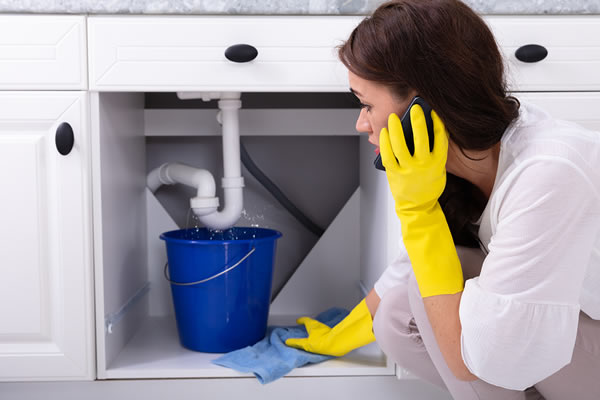Exactly how to Find and Repair Water Leaks-- A Comprehensive Overview
Exactly how to Find and Repair Water Leaks-- A Comprehensive Overview
Blog Article
How do you actually feel when it comes to Finding hidden leaks?

Early detection of leaking water lines can alleviate a possible disaster. Some tiny water leaks may not be noticeable.
1. Check Out the Water Meter
Inspecting it is a guaranteed method that helps you discover leaks. If it moves, that indicates a fast-moving leak. This means you may have a slow leakage that can also be underground.
2. Examine Water Intake
Examine your water bills as well as track your water consumption. As the one paying it, you need to observe if there are any type of discrepancies. If you spot sudden changes, regardless of your usage being the same, it means that you have leakages in your plumbing system. Keep in mind, your water costs must fall under the very same range every month. An abrupt spike in your expense shows a fast-moving leakage.
A constant increase every month, also with the very same practices, reveals you have a slow leakage that's additionally slowly intensifying. Call a plumber to thoroughly inspect your residential or commercial property, specifically if you really feel a warm location on your floor with piping underneath.
3. Do a Food Coloring Examination
30% comes from toilets when it comes to water consumption. Examination to see if they are running appropriately. Decline specks of food color in the storage tank and also wait 10 mins. There's a leakage in between the container and bowl if the color somehow infiltrates your bowl during that time without flushing.
4. Asses Exterior Lines
Do not fail to remember to examine your exterior water lines as well. Must water seep out of the connection, you have a loosened rubber gasket. One small leak can squander loads of water and increase your water costs.
5. Check and Assess the Circumstance
House owners should make it a habit to examine under the sink counters as well as also inside cupboards for any bad odor or mold and mildew growth. These 2 red flags show a leak so prompt focus is needed. Doing regular assessments, even bi-annually, can conserve you from a major trouble.
Check for stainings and also deteriorating as a lot of home appliances as well as pipelines have a life expectancy. If you presume dripping water lines in your plumbing system, do not wait for it to escalate.
Early detection of dripping water lines can reduce a prospective catastrophe. Some small water leaks may not be visible. Checking it is a proven means that assists you discover leakages. One little leak can waste bunches of water and also surge your water bill.
If you believe leaking water lines in your plumbing system, don't wait for it to intensify.
The Dangers of Undetected Water Leaks
Mold
One of the most common results of undetected water leaks in your home is mold. Under the right conditions, mold can begin to grow and spread in just a day or two.
Moisture from water leaks combined with humidity and lack of ventilation allow mold spores to germinate and start spreading.
And while household mold doesn’t carry the same health risks as substances like asbestos, they can cause allergic reactions in people sensitive to them or with asthma.
Structural Damage
When water leaks occur in places we can’t see — above the ceiling, behind walls or beneath floors — they often have time to do some serious damage before making themselves known.
You might notice cracks or bubbles appear in your walls or a slow drip or water from the ceiling.
These are signs of water leaks and buildups in the structure of your home. If you don’t jump on these problems soon enough, the wood frame that supports your house could start rotting, leading to costly repairs and increasing the risk of disasters like ceiling or wall collapses.
Water Waste
According to the Alliance for Water Efficiency, the average home can lose anywhere from 2,000 to 20,000 gallons of water per year due to leaks.
High numbers like that might make you imagine a burst pipe spewing out water. But believe it or not, even a small, constant drip from a kitchen sink could add up to over a thousand gallons of wasted water in a single year.
And if you live in a place where you pay for every gallon of water you use, that adds up to a lot of dollars down the drain. So we understand leaks are bad. Let’s take a look at some of the common (and not-so- common) water leaks you might find around your home.
Flush Valve Flapper
The flush valve flapper is a rubber flap that sits above the flush valve at the bottom of the tank. It’s attached to the flusher with a chain. Over time, it can get worn out and lose its seal, causing an endless flow of water into the toilet bowl.
These leaks are hard to detect since they’re usually silent, but there’s a little insider trick you can use with just a little dye or food coloring:
Put a few drops in the toilet tank. Check the water in your toilet bowl 15 minutes later. If any of the color made it into the toilet bowl, you’ll know what the culprit is.
Fill Valve
The fill valve is what replenishes your toilet’s tank water after you flush. If you’ve ever looked inside your toilet tank and seen water gushing out of an upright plastic valve, that’s a faulty fill valve.
https://meetflo.com/blogs/flo/how-to-find-and-repair-water-leaks-a-comprehensive-guide

We had been shown that report on Top leak detection hacks from a friend on a different web blog. Loved our article? Please share it. Let somebody else check it out. We appreciate reading our article about Locating water leaks.
Report this page